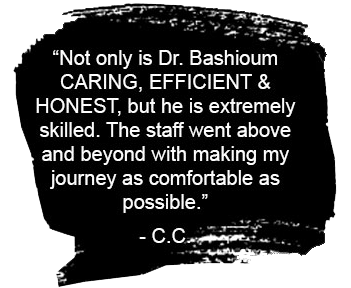Breast Cancer Part 2: Reconstruction Choices
October 22nd, 2014
Breast Reconstruction Choices
One in eight US women will be diagnosed with breast cancer. Breast cancer is the most common cancer among women in the US. Many women are distraught by the news they have breast cancer and feel this sense of urgency to make important decisions regarding their care. We advise our patients to take time to understand their options and choices. Breast reconstruction generally falls into two categories: implant reconstruction or reconstruction using a person’s own tissue, also known as autologous reconstruction. Autologous reconstruction can be subdivided into either flap reconstruction, reconstruction with autologous fat transfer or even a combination of the two. Fat transfer is perhaps the least invasive option, using your own liposuctioned fat to reconstruct the breasts.
Fat Grafting
A newer and increasingly popular alternative in autologous (your own) reconstruction is breast reconstruction with fat grafting. Fat grafting is natural, flexible and versatile. It allows the plastic surgeon to gradually sculpt and reconstruct the breast to a natural looking shape and feel. Patients can expect breasts with a more natural look and feel. Like other reconstructive techniques, fat grafting is a staged procedure with results achieved over time. Fat is harvested from the abdomen, flanks and thighs and then is injected into the breasts through small incisions. This is an outpatient procedure, with each stage carried out every 3 to 6 months. The number of stages required for completion varies on an individual basis. Recovery time from each stage is typically less than one week with minimal down time from surgery. The results are long lasting and the patient also receives the added benefit of liposuction at the donor sites. This technique may be used for correction of deformities resulting from lumpectomy, as well as for post-mastectomy reconstruction. Studies suggest that fat graft injections may improve the quality and texture of radiated skin and provides an exciting new option for breast reconstruction. Our series continues next week. Click here if you missed Part 1.
Breast Cancer: Knowledge is Power Part 1
October 16th, 2014
October is Breast Cancer Awareness Month. One in eight US women will be diagnosed with breast cancer. We are posting this multi-part series and the new posts will address the choices women have for the treatment and reconstruction of breast cancer. Breast cancer is the most common cancer among women in the US. Many women are understandably distraught by the news they have breast cancer and feel a sense of urgency to make important decisions regarding their care. Surgery to treat breast cancer can have a significant impact on quality of life and yet many women feel pressured to make these decisions. Overcoming breast cancer is a journey and a very individual one that involves choices about the type of breast surgery, the need for additional treatments (chemotherapy or radiation) and options for breast reconstruction. Research has found that breast reconstruction contributes to a woman’s self-esteem and sense of wellbeing; however, over 70% of women eligible for breast reconstruction are not told about all of their options.
Knowledge is power. As a plastic surgeon, it is our role to make sure my patient knows and understands all of her reconstructive options before her cancer is treated and removed. Every woman diagnosed with breast cancer should seek a referral to a plastic surgeon. Ultimately, knowledge is power and breast reconstruction is about choosing the option that will give you the best possible quality of life. Each person is driven by different motives and sensitivities, personally unique to their own individual circumstances.
Next time: Take Time to Make the Right Decisions Part 2
